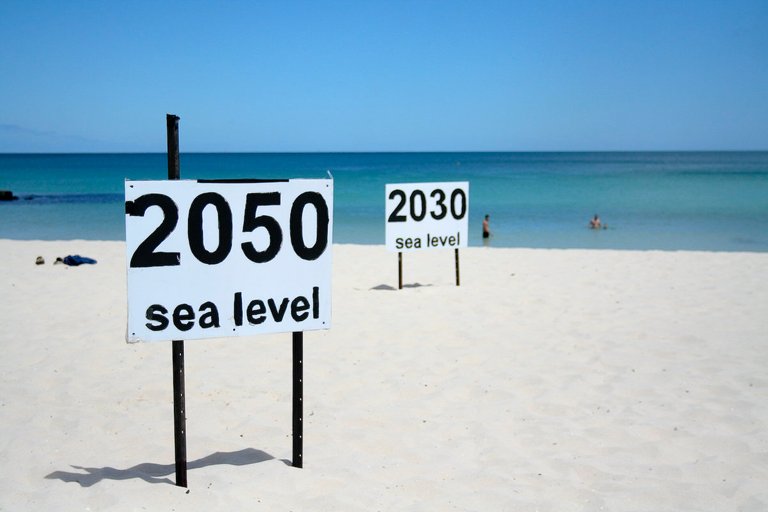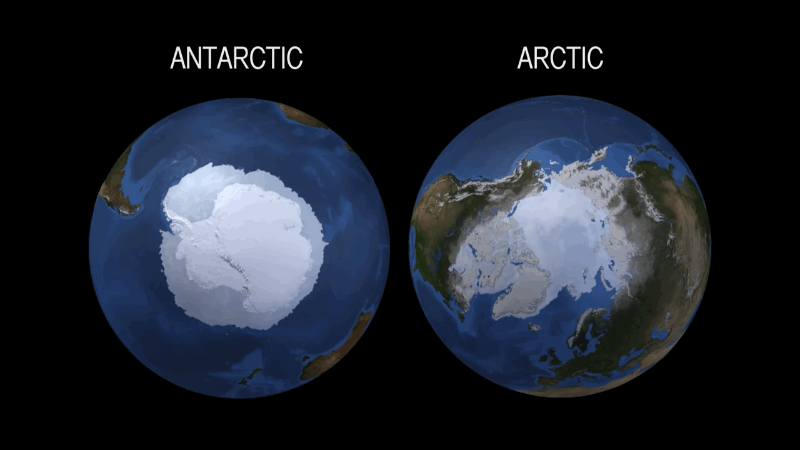
Approximately 71% of the surface of our planet is covered with water, so the assessment of changes in sea level - one of the most important tasks, which allow scientists to predict future climate change on Earth and the living conditions of people living in different regions of the planet. Until now, scientists believed that know exactly the dynamics of changes in sea level. This rise in sea level of 1.6 cm per decade, beginning in 1900. Anyway, these are the data leads National Oceanic and Atmospheric Administration (NOAA). The main reason for rising sea levels - global warming.
A new study published in the October edition of Geophysical Research Letters, suggest that scientists have underestimated this value. In some regions, raising sea levels more rapidly accepted measure of about 5-28%. Global sea levels, as the authors of the study say increased no less than 14 centimeters in the last hundred years, and in some regions - and all 17 centimeters.
The reason for this underestimation was discovered by scientists from the NASA Jet Propulsion Laboratory and the University of Hawaii at Manoa. Comparing the parameters of the current climate models with sea-level measurements in previous years, a team of climate scientists has found that the testimony of coastal tide gauges and flow, may not be as revealing as it was thought, and such data can not be used as a reference. Sensors located in many places in the northern hemisphere, are the primary source of data for the measurement of global sea-level rise over the last few decades.
"This is not a situation where the wrong data or incorrect work tools. For several reasons, the sea level is not the same changes on the planet ", - said Philip Thompson, head of research. "It turned out that our data is collected in a place where the sea level rises less rapidly due to global warming."
Typically, the water level measurement stations are stationary. Also the water level, such station can determine weather conditions and the region including the wind speed and pressure, the factors that often affect the sea-level measurement.
The only problem in this whole situation - the place where such plants are located. According to the study, most of the stations located in the northern hemisphere, where the sea ice is melting faster than in the Southern Hemisphere.

As it turned out, the sea level changes are not stronger in situations where the main factor of change in the level of the World Ocean. In fact, the most active level rises in areas remote from this factor. According to one source, the melting ice in the northern hemisphere most strongly affect the raising of the water level in the "South Pacific Ocean and the Equator."
The project team also believes that found the reason why the effects of the melting ice may vary from region to region. For example, changes in China can vary significantly with changes in the US or Africa. Sea level raising speed is different in different regions due to the effects of additional factors. This can be the winds, ocean currents, gravity, tides.

The consequences of the melting of Greenland's ice. Brown color shows areas with a record of sea level rise
"This is very important because it is likely that the impact of certain winds or currents may be responsible for underestimating the speed of sea level rise," - says Thompson. Scientists say that all this - not an accident, experts need to change the rate of sea level rise upward. Climatologists are building a variety of predictions, but most experts agree on one thing - global warming really is, and it is the cause of the rapid melting of ice in both hemispheres of the Earth. Professor Peter Wadhams of Cambridge, for example, claims that this or next years the Arctic could be completely free of ice, which has not happened the last 100 thousand years.
This year we see new climate records. For example, every month of the year is the warmest on record. NASA officials say that now is the summer ice covers 40% less area than it was thirty years ago. If the Antarctic ice sheet will continue to melt, then in the future sea level rises by 3.6 meters, just wipe out many of the city, located on the coast.
Very important issue, @whitemike313. Thank you, upvoted! This is the forecast, so now we´ll have to work on solutions to impede it. I´ve been on Maldives recently. They would completely disappear according to these figures. This is a quite horribe imagination!
Is the ocean level rising or are the Maldives sinking?
Sinking? Could they? Good question... will do a research!
certainly they could. Islands (many of them) are the surface of underwater mountains...made by volcanic activity. Wind and wave erode the surface....they go away?
Also..what happens when the inhabitants pump out all of the fresh water underground? What holds the surface up when they do?
Also...suppose the islands are on a tectonic plate that is subducting under the plate next to it?
Also..suppose the island in question is on the backside of a plate that is undergoing isotatic rebound?
Also...what about the wobble of the earth's axis...it changes over time. How does that effect the tides?
Also...well that's enough for now.
Nice post resteemed
Not being confrontational, but why are 100% of the predictions of
global warmingclimate change all negative. Are there absolutely no positive effects of temperatures increasing? Wont crop yields in some areas increase? Storms are only going to get worse, not less intense in some areas? After 34 years of being told the world is going to end if I don't do this or that, and nearly every prediction I've heard failing to come true, I've become skeptical of any of the predictions.Upvoted even if I disagree.
I also think that for such items should be treated with skepticism. but the climate, at least in my region, has really changed over the last 10 years.
Nasa has a history.... Ooops
Great read. Please keep posting!
That whole thing is wrong!